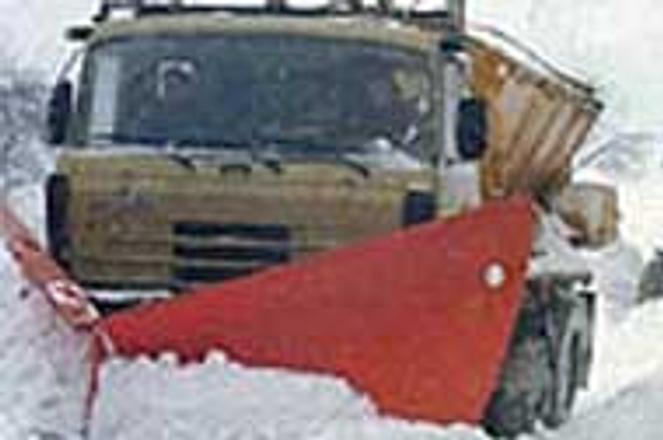After three days of blizzards, residents of the eastern Slovak district of Košice began the weary task of clearing blocked roads and re-establishing communications with cut off villages.photo: TASR
According to an old Slovak proverb, every year on November 11, a man named Martin comes galloping into town on his white horse bringing Slovakia its first snow of the year.
The blizzard which slammed into Slovakia during Valentine's Day weekend, however, had many in the country wondering if Martin had been dissatisfied with his earlier effort.
"Martin has gone crazy!" said Alper Olzogman, 24, a British-born English teacher who has lived in Slovakia for seven years. "Of all the time I have lived in this country, I have never seen so much snow here!"
Danielka Junasová, a six year old elementary school student in Bratislava, explained that the excess snowfall had been a treat for two main reasons. "I love this snow because I get to go skiing with my mom every day at Koliba. Also, our breaks at school last longer now so we can play in the snow," she said.
Dagmar Križková, a meterologist with the Slovak Meteorological Institute, explained why the storm had been the biggest of the year.
"The storm was the result of a collision between a powerful low-pressure system, which had moved northwards out of Italy, and a strong cold front, which had moved westwards from Ukraine," she said. "They collided over Slovakia and the result was a blizzard with very strong winds and snowfall amounts of (up to 60 cm)."
In total, "Martin's Blizzard" resulted in eight deaths and over 100 traffic accidents, while 130 villages were completely cut off from the rest of the world for more than three days. Almost 400 children were stranded at ski resorts for a week after the snow blocked roads that led to their homes.
In response to the crisis, the government deployed all available helicopters, 500 police cars, 1,300 policemen, over 100 pieces of military "heavy machinery" - including tanks - and 1,140 soldiers. Rescue workers saved 450 passengers of stranded and/or stuck cars, lorries, buses, ambulances and salting vehicles, news agencies reported.
The High Tatra region, famous for its mountainous ski resorts, benefited the most from the blizzard with all resorts reporting excellent ski conditions. The storm brought over 60 cm of new snow, which has fully covered the mountain of Solisko for the first time in 25 years. Lomnicke Sedlo, Slovakia's highest-altitude ski resort, has reported large amounts of snow but has not yet been able to open this year due to the danger of avalanches.
In eastern Slovakia, the five districts of Bardejov, Kežmarok, Košice, Prešov, and Vranov nad Topľou were reported to have been hardest hit by the storm. News agencies said snow drifts over three metres high blocked roads and said that four women in labour had to be transported to hospital by military vehicles.
The mayor of Košice, Rudolf Schuster, asked the Slovak Interior and Defence Ministries for national aid. After an emergency Army staff session on February 13, soldiers and heavy-duty vehicles were deployed.
Train service was also affected by the blizzard in the Košice area. Miloš Cikovský, spokesman for Slovak Railways (ŽSR), said that service on all inter-city trains in the region had been cut, which added to the ŽSR's blizzard-related daily losses of 40 to 50 million Sk.
On February 15, Prime Minister Mikuláš Dzurinda visited the hardest-hit areas in Košice and Prešov, and congratulated all units that had aided in rescue missions. Dzurinda also said that Slovakia had not been properly equipped to handle a blizzard of such proportions. He blamed a lack of coordination between agencies for part of the problem, saying, "this stemmed from the fact that each of the rescue units are bound by their own regulations and responsibilities."
Dzurinda left the region promising that the situation would be evaluated at the State Defence Council and at the Slovak Government session on February 17.


